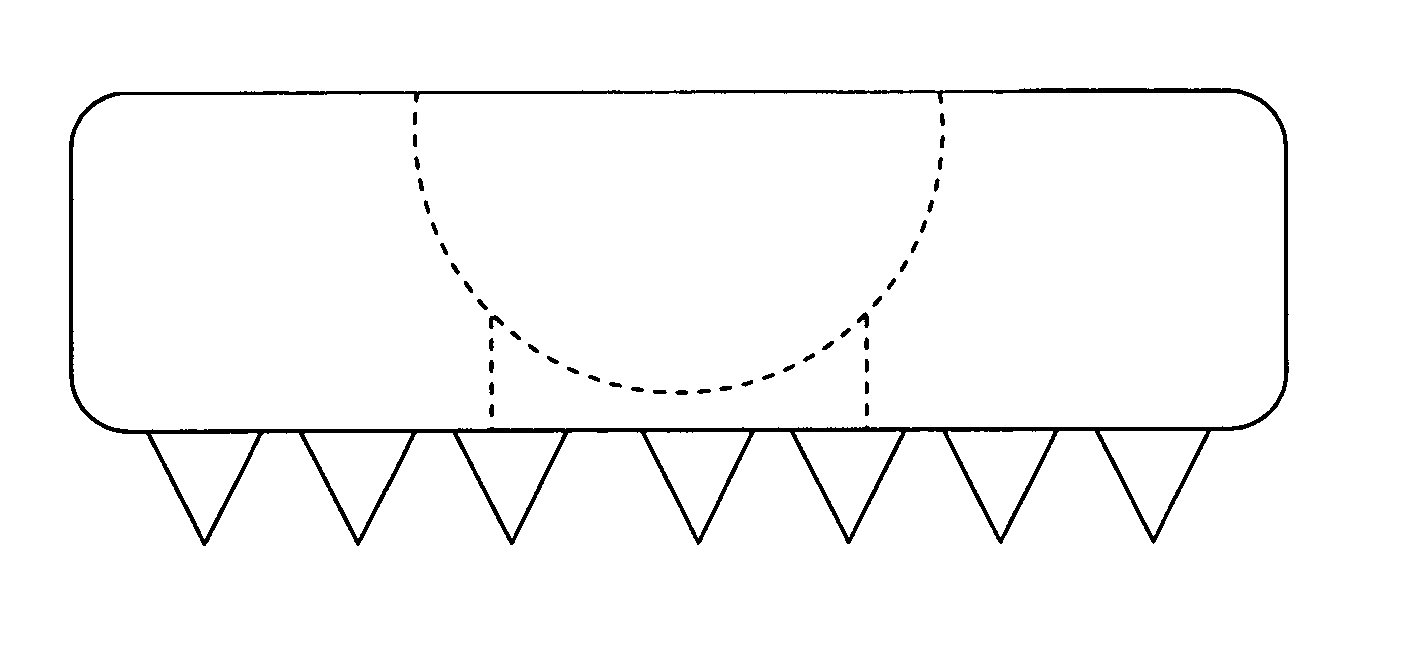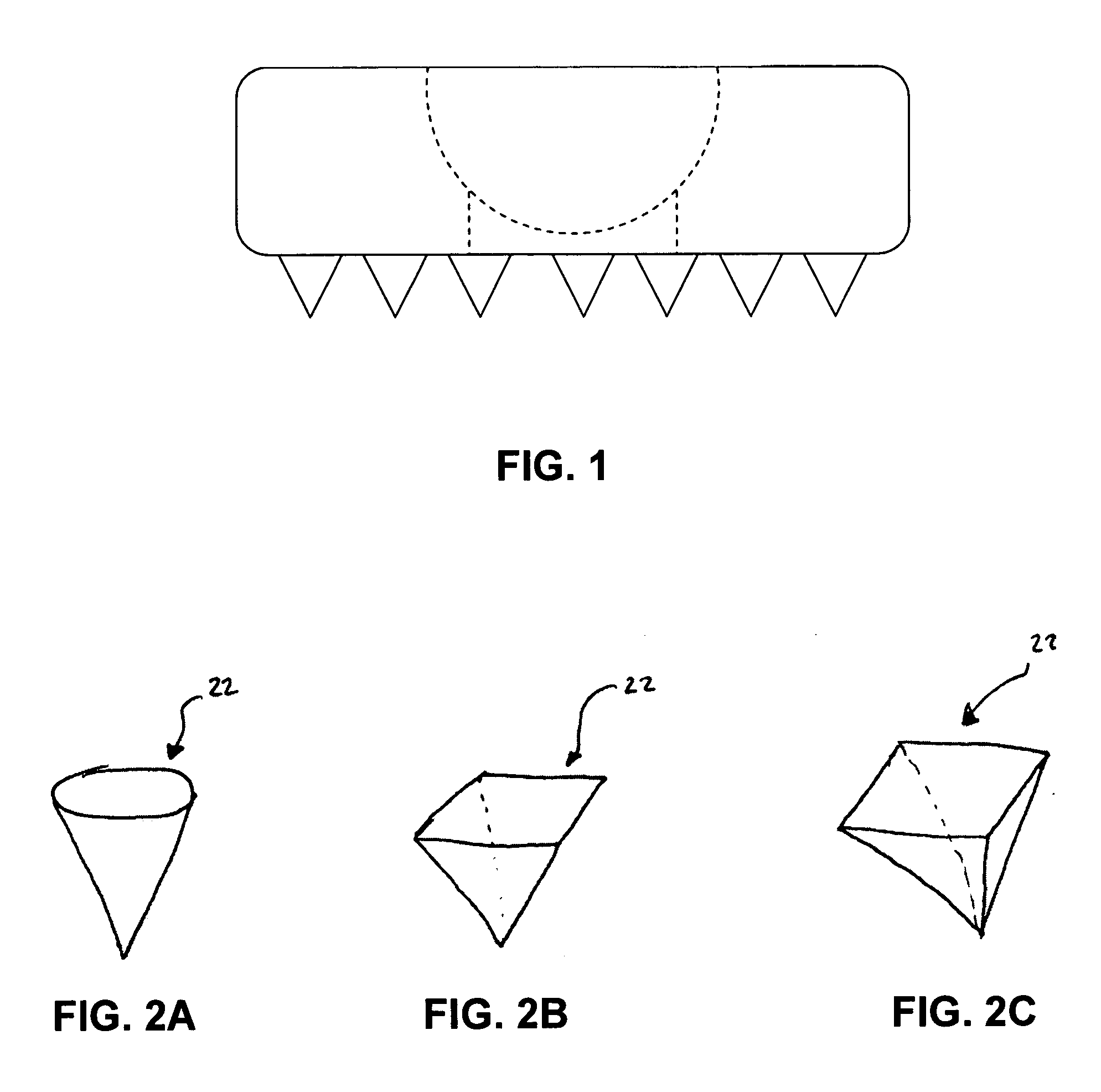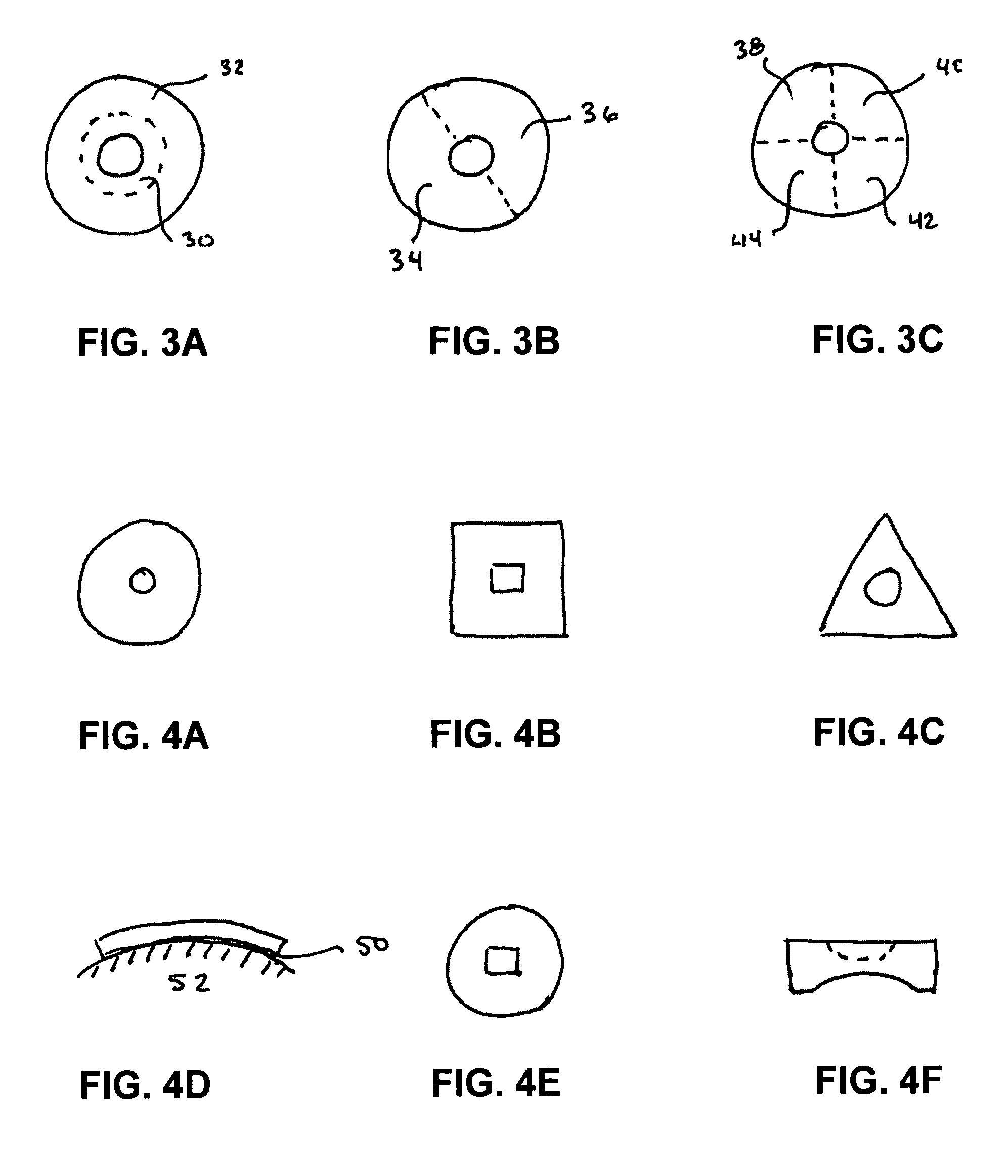Load distribution crown
a technology of loading crown and crown sleeve, which is applied in the field of loading crown, can solve the problems of free end movement of the crown, and achieve the effect of reducing the chance of undetected bone structural integrity damag
- Summary
- Abstract
- Description
- Claims
- Application Information
AI Technical Summary
Benefits of technology
Problems solved by technology
Method used
Image
Examples
Embodiment Construction
[0034] Fastening devices are currently used in a wide variety of applications that range from construction to medical equipment. Typical fastening devices include nails and screws. Screws are often used as fastening devices in medical applications, typically to fasten a device to bony tissue or to provide temporary or permanent support.
[0035] In medical applications, one consideration when using a screw is the amount of force that the screw will exert on the bony tissue that it is inserted into. If a screw exerts too much pressure on bony tissue, it can compromise the structural integrity of the bone, which can cause many complications. The angle of insertion can also compromise the structural integrity of the bone. In some instances if the angle of insertion diverges significantly from a direction orthogonal to the bone it may cause the bone to crack or break. Thus, the angle of insertion and the pressure that a screw exerts are factors to consider when used in medical application...
PUM
 Login to View More
Login to View More Abstract
Description
Claims
Application Information
 Login to View More
Login to View More - R&D
- Intellectual Property
- Life Sciences
- Materials
- Tech Scout
- Unparalleled Data Quality
- Higher Quality Content
- 60% Fewer Hallucinations
Browse by: Latest US Patents, China's latest patents, Technical Efficacy Thesaurus, Application Domain, Technology Topic, Popular Technical Reports.
© 2025 PatSnap. All rights reserved.Legal|Privacy policy|Modern Slavery Act Transparency Statement|Sitemap|About US| Contact US: help@patsnap.com



